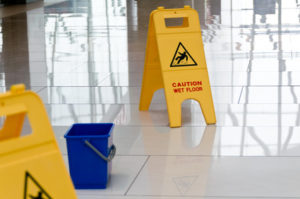New York City Slip and Fall Accident Attorney
 Serving Westchester and New York City clients after slip and fall injuries
Serving Westchester and New York City clients after slip and fall injuries
The Law Offices of Jonathan D. Sands has extensive experience representing clients in slip and fall and trip and fall accident cases throughout Westchester County and New York City. If you have been injured in an accident on a sidewalk, roadway or parking lot, if you have been injured due to the negligence of a municipality, a commercial, or a private property owner, you should contact an attorney as soon as possible. For nearly 20 years, the Law Offices of Jonathan D. Sands has been aggressively fighting for full compensation for its clients who have been injured in these types of accidents. Contact our office today for a consultation about your case. There is no cost or obligation.
Sidewalk Accidents
Sidewalk accidents have the potential to cause very serious injuries. While we walk through our communities, we are faced with obstacles and hazards that can hurt us and leave us unable to work while at the same time incurring large medical bills. If you were to slip or trip on a sidewalk, you could suffer a multitude of injuries that can leave you with an uncertain future. If you are injured on a sidewalk and can establish that it was caused by another’s negligence, you may be entitled to recover damages for your pain and suffering, medical bills, lost earnings and diminution of your ability to enjoy life.
Parking Lot Accidents
Parking lots allow easy access to the many municipal, commercial, and residential properties across the United States, including schools, airports, and shopping centers, to name just a few. The owner of the parking lot is liable for the conditions of the parking lot surface. Property owners have a responsibility to monitor their parking facilities and keep them reasonably clear of hazards that can cause people harm.
Snow & Ice Accidents
The walking surfaces of our communities are riddled with hazards that have the potential to hurt us. Property owners have the responsibility to reasonably maintain their walking surfaces in safe condition. Snow and ice are some of the most dangerous factors leading to serious injuries suffered by pedestrians falls caused by snow or ice can cause concussions, broken bones, spine damage, and many other serious injuries. According to the laws of New York, a property owner has a certain period of time after a storm concludes to clear their walking services of snow and ice, including the adjacent sidewalk.
Municipal Property Accidents
As pedestrians, we navigate the walking surfaces of our communities with the hope that our municipalities will take all precautions to ensure our safety. When we walk on the sidewalks, parking lots, and streets of our communities, we are walking on surfaces that should be maintained, free of hazards. In some cases, we are walking on surfaces that should be maintained by our municipality. Like every property owner, our municipality should be frequently monitoring and clearing hazards, including potholes, cracked surfaces, weather-related hazards, slippery substances, and more.
Premises Liability
Whether you are walking on private, commercial or municipal property, every property owner has the obligation to take the necessary precautions to ensure the safety of those traversing the property. Unfortunately, not every property owner takes care of their premises which can lead to dangerous conditions that are hazardous to pedestrians. State and local laws and codes are in place to protect us if the negligence of property owners results in serious injuries.
Supermarket Accidents
Supermarkets and retail stores are riddled with hazards that can cause patrons serious injuries while shopping. We rely on the store owner and staff to monitor the aisles and other common areas and to keep them safe from dangerous and hazardous conditions. We also rely on the stores to be well-designed and safe. Unfortunately, all too often patrons encounter dangerous conditions such as wet floors, tripping hazards, merchandise falling from shelves, improperly designed aisles and display cases, and cracks in sidewalks and parking lots.


